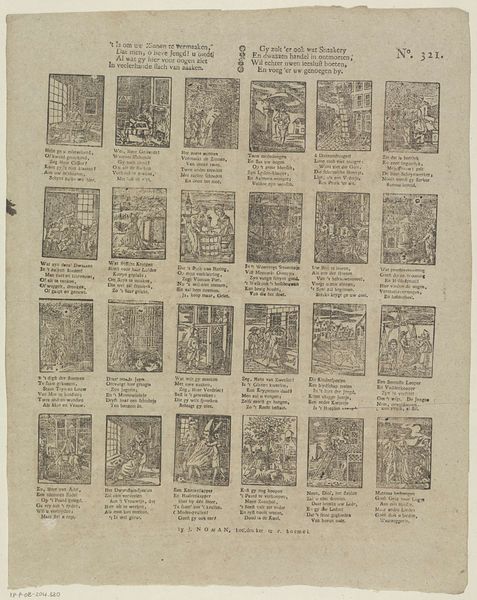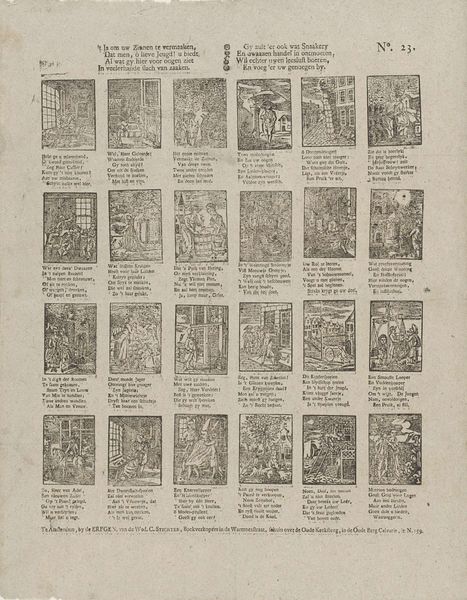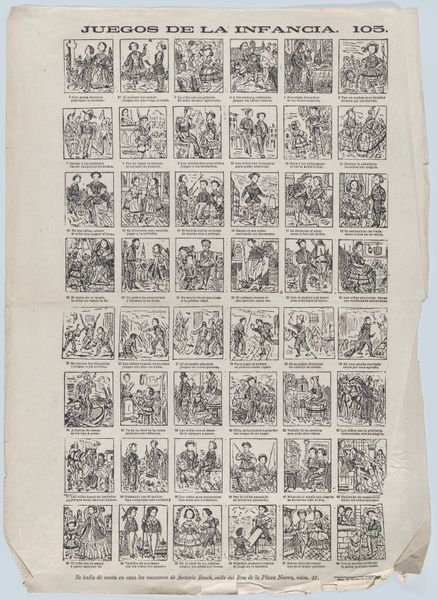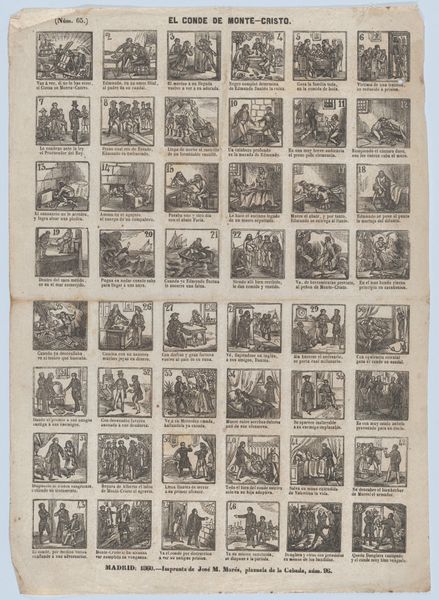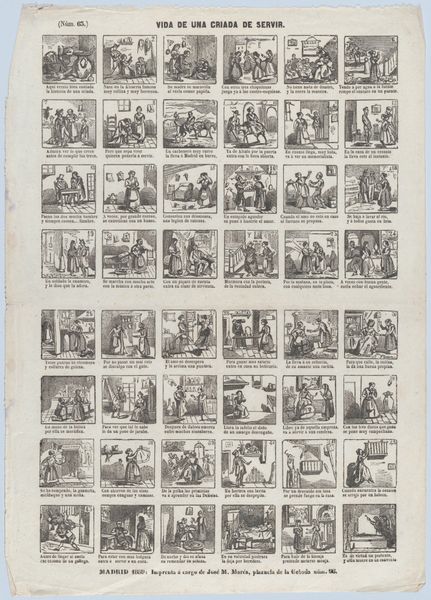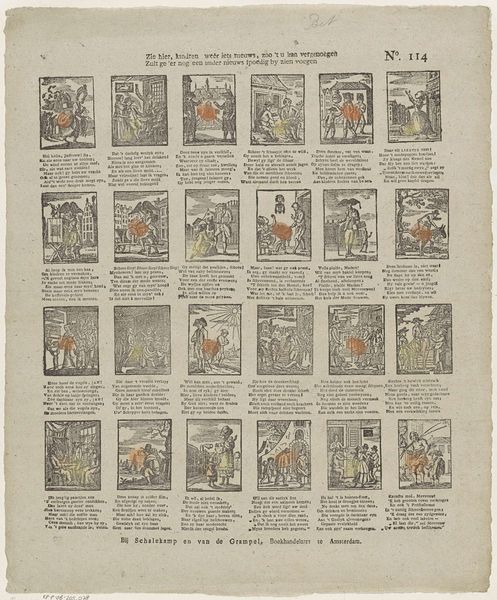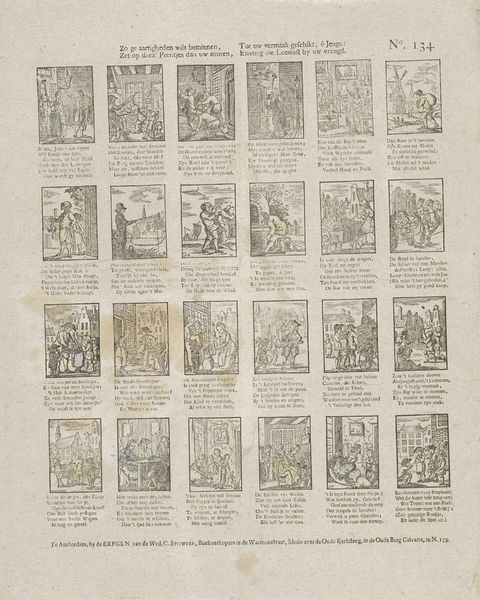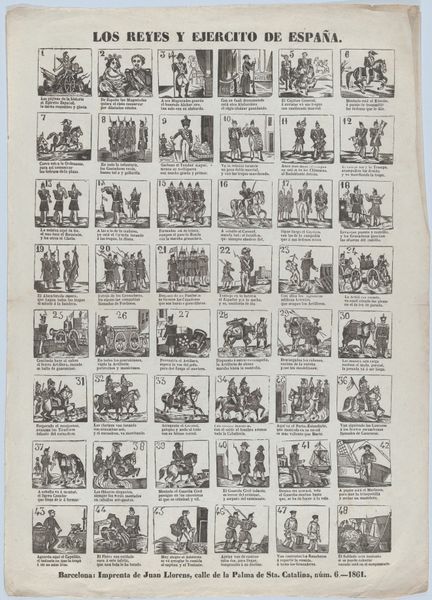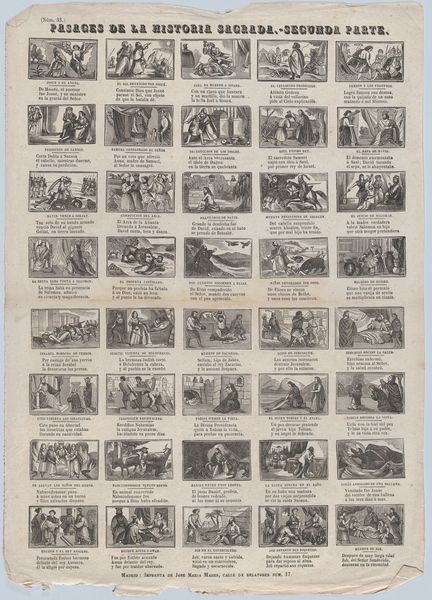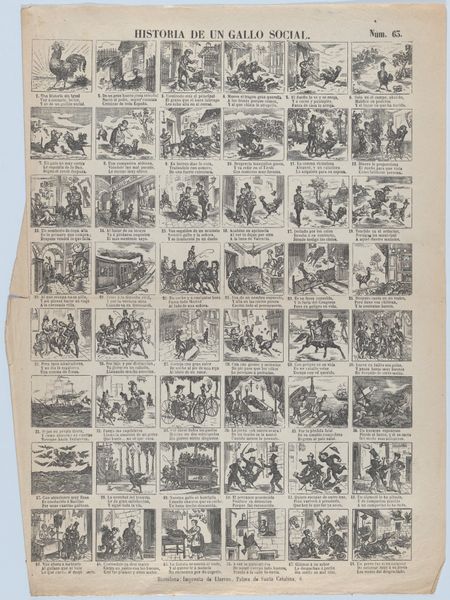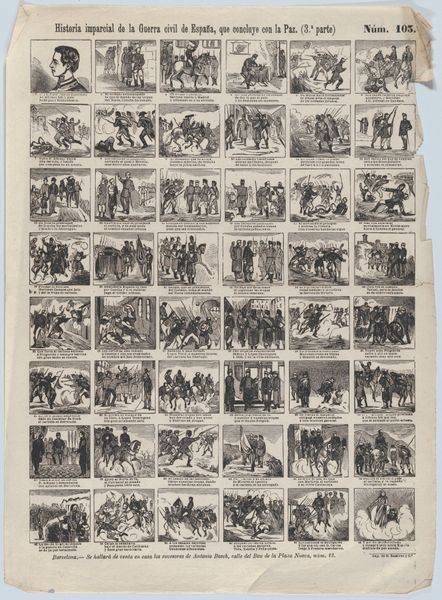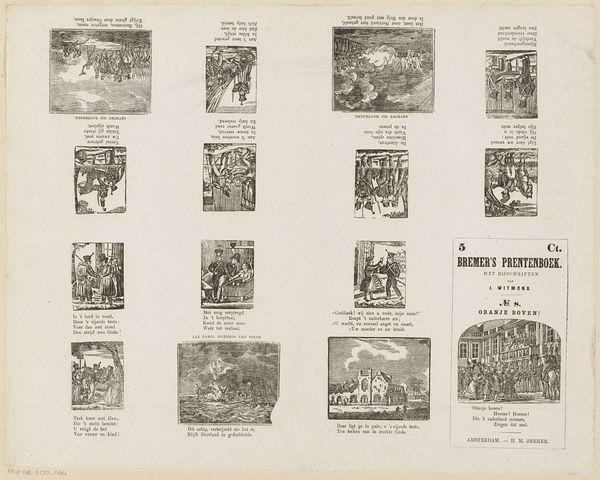![Wilt gy, kindern, u vermaaken, / Allerhande soort van zaaken [(...)] by Johan Noman](/_next/image?url=https%3A%2F%2Fd2w8kbdekdi1gv.cloudfront.net%2FeyJidWNrZXQiOiAiYXJ0ZXJhLWltYWdlcy1idWNrZXQiLCAia2V5IjogImFydHdvcmtzLzJhMzM3N2IyLWE3ODctNGY4NC04MjI4LTgwMjRmNzU0YzAzMy8yYTMzNzdiMi1hNzg3LTRmODQtODIyOC04MDI0Zjc1NGMwMzNfZnVsbC5qcGciLCAiZWRpdHMiOiB7InJlc2l6ZSI6IHsid2lkdGgiOiAxOTIwLCAiaGVpZ2h0IjogMTkyMCwgImZpdCI6ICJpbnNpZGUifX19&w=3840&q=75)
Wilt gy, kindern, u vermaaken, / Allerhande soort van zaaken [(...)] 1806 - 1830
0:00
0:00
graphic-art, print, engraving
#
graphic-art
#
narrative-art
# print
#
folk-art
#
romanticism
#
genre-painting
#
engraving
Dimensions: height 405 mm, width 317 mm
Copyright: Rijks Museum: Open Domain
Curator: This engraving, created between 1806 and 1830 by Johan Noman, titled "Wilt gy, kindren, u vermaaken, / Allerhande soort van zaaken," presents us with a series of vignettes. Editor: It’s… busy. There's a folk-art rawness to it. Almost like a proto-comic book, perhaps a moralistic guide rendered through printmaking, intended for the masses. Curator: Exactly. Noman was a book seller and publisher in Z. Bommel, producing printed matter for wide distribution. Notice the variety of scenes; tradespeople, games, moments of instruction. This speaks to the rise of print culture and accessible materials. How could production enable, as you hinted at, instruction or moral lessons for ordinary citizens? Editor: Each miniature acts as a microcosm of its time, capturing moments of work and leisure across Dutch society. But it’s not neutral. The act of printing itself requires resources and labour, the paper, the engraving. We need to be critical: who funded this? What social strata were considered the 'ordinary' people needing guidance? Curator: That’s a very important lens to use on Noman's piece, but I am curious as to how a nineteenth century citizen might encounter this print. Consider the performative aspect – was this print pinned to the wall or circulated among families to inspire conversation and introspection. Editor: I see it being read collectively. Maybe during the evening. What does it tell us that people gathered and were meant to glean instruction and values from these depictions? Curator: It also suggests new forms of engagement and production: cheap paper meant affordability. Suddenly people can become literate in larger numbers; they could be enlightened or influenced, yes, but knowledge itself also becomes democratized in the process. Editor: I agree, democratization is central here. The scale and multiplication of images allows, possibly for the first time, for many communities to imagine or picture themselves reflected in artwork and society. Curator: Yes. As much as we examine the hands-on techniques involved and those broader material processes, situating those aspects politically—that is really the key to understand popular art. Editor: Indeed. Viewing this through both material and societal processes has helped to better contextualize and give voice to these overlooked artisans from history.
Comments
No comments
Be the first to comment and join the conversation on the ultimate creative platform.
